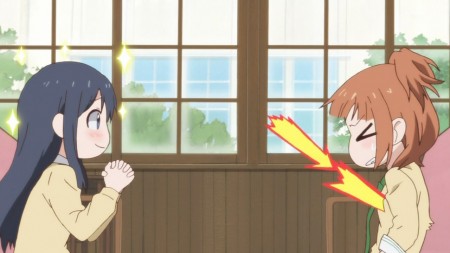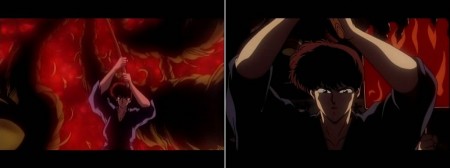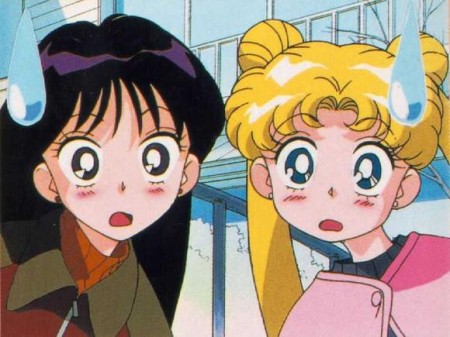Ask John: How Have Anime Sight Gags Evolved?

Question:
I have been watching a lot of new anime on streaming sites like Hulu… I still notice weirdly drawn eyes in reaction to something, or that anger symbol on a character’s head. Haven’t seen any giant sweat drops off to the side.
Answer:
I’d like to briefly address the evolution of anime sight gags, particularly for anime viewers unfamiliar with golden age anime. The concept of including visual clues to action or attitude is a trait inherent to cartooning and has existed practically as long as animation itself. A character kicking up a dust cloud after breaking into a sudden dash is an immediately recognizable sign of abrupt movement. Stars or small birds circling the head is a universally recognized symbol of “seeing stars” after taking a blow to the head. Just like every other variety of animation, Japanese anime has always employed similar visual cues. However, during Japan’s revolutionary 1980s “golden era” when creativity was most encouraged within anime development, conventional body contortion and widely accepted visual gags evolved into more elaborate and significant visual gags. Particularly in the most expressive 80’s anime, sight gags extended beyond being just background imagery or cues that supported viewer interpretation and stepped forward, becoming literal foreground effects that actually physically interact with other characters. For example, in the first episode of the 1983 Stop!! Hibari-kun! television series, when Mr. Oozora symbolically feels himself being overwhelmed by a tidal wave of circumstance, the tidal wave actually washes over and submerges Kousaku also, who happened to be sitting nearby Mr. Oozora.
These days, such elaborate sight gags that were quite common in 80s anime have become less frequent and more subdued, becoming jokes like the example from Love Lab episode 6 in which Riko’s brother can visably see his sister “burning with passion.” But the sight gag doesn’t involve and absorb him the way such sight gags commonly would have in the 1980s.
Anime sight gags began to evolve again and become, once more, subdued as the 80s ended. Sight gags have long been subject to meta-cinema manipulation. For example, in the 1981 television series Honey Honey no Sutekina Bouken a character breaks the metaphorical fourth wall by literally breaking through the “panel” into the on-screen action.
As the 1990s began, meta-cinema sight gags became more commonplace and, moreover, more sophisticated. For example, in the 1994 third Ranma ½ movie, Kunoichi is introduced masculinly and dominantly standing within a wall of flames. But the next shot reveals that the “wall of flames” is actually just a painted cardboard sign held up behind him.
Contemporary anime has adopted a use of more subtle visual gags. Backgrounds that reflect a character’s personality or state of mind continue to appear frequently in today’s anime, but unlike golden age anime, these background effects don’t last for more than one shot and don’t literally impact surrounding characters. Similarly, the anime sweatdrop used as a visual cue to signify anxiety frequently appears especially large in older anime. The singular sweatdrop does still appear in today’s anime. But an observer may notice that the modern sweatdrop is a bit smaller and less prominent than it used to be. In an example from the early 1990s, the sweatdrop is so large that it extends off of the character’s heads:
In examples of the sweatdrop from anime episodes that aired last week, the sweatdrop is smaller and less prominent in the focus point of the shot.
Similarly, in contemporary anime background imagery is used to reveal a character’s state of mind, but the image is static and passive instead of active and prominent as it typically would have been in golden era anime.
As contemporary anime has become more sophisticated and contemporary anime has become more focused on character over narrative, sight gags have become more subtle and used as a trope to emphasize individual character traits instead of being a tool to enhance the atmosphere of the entire show.








